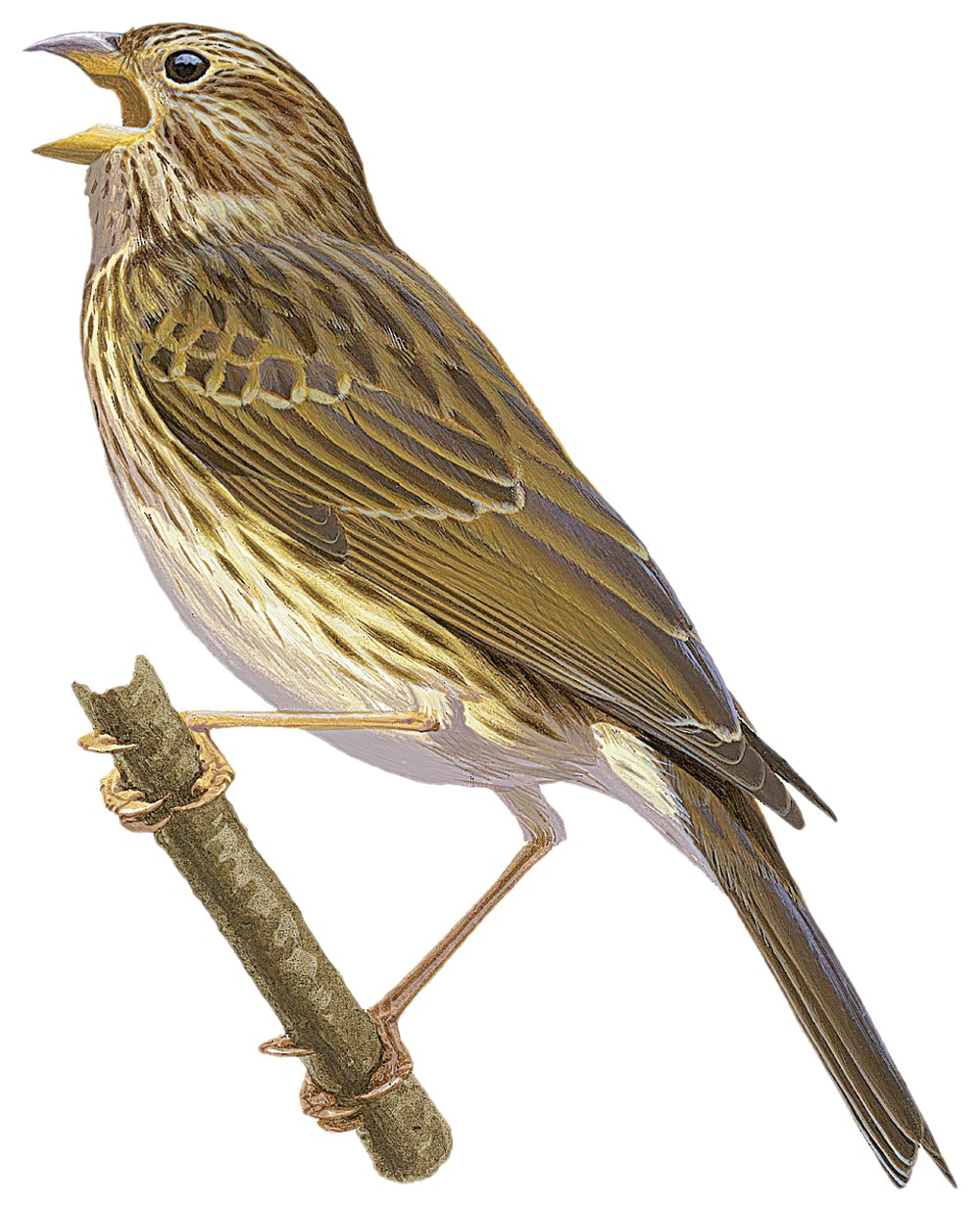Corn Bunting / Emberiza calandra

Corn Bunting
SCI Name:
Protonym: Emberiza calandra Syst.Nat.ed.10 p.176
Taxonomy: Passeriformes / Emberizidae / Emberiza
Taxonomy Code: corbun1
Type Locality: Europe ; Sweden accepted as restricted type locality, vide Hartert, 1904, Vogel pal. Fauna, p. 165.
Author: Linnaeus
Publish Year: 1758
IUCN Status: Least Concern
DEFINITIONS
EMBERIZA
(Emberizidae; Ϯ Yellowhammer E. citrinella) Old Swiss German name Embritz for a bunting < Old German Ammer bunting. "97. EMBERIZA. Rostrum conicum. Mandibulæ basi deorsum a se invicem discedentes: inferiore lateribus inflexo-coarctata; superiore angustiore." (Linnaeus 1758); "Emberiza Linnaeus, 1758, Syst. Nat., ed. 10, p. 177. Type, by subsequent designation (G. R. Gray, 1840, List Genera Birds, ed. 1, p. 47), Emberiza citrinella Linnaeus." (Paynter in Peters, 1970, XIII, p. 5). Linnaeus's Emberiza comprised fourteen species (E. nivalis, E. Calandra, E. Hortulana, E. Citrinella, E. Orix, E. Quelea, E. militaris, E. atrata, E. familiaris, E. flaveola, E. psittacea, E. paradisæa, E. Ciris, E. Alario).
Var. Emberyza, Emberitza, Embritza, Embriza, Emberisa, Emeberiza.
Synon. Buscarla, Chrysophrys, Cia, Cirlus, Citrinella, Cosmospina, Cristemberiza, Crithophaga, Cynchramus, Fringillaria, Fringilloides, Glycyspina, Granativora, Hortulana, Hortulanus, Hylaespiza, Hypocentor, Latoucheornis, Melophus, Miliaria, Ocyris, Onychospina, Orospina, Pityornis, Polymitra, Pyrrhulorhyncha, Schaenicola, Schoeniclus, Spina, Spodiospina, Tisa.
calandra
Unattested L. calandra Calandra Lark < Gr. καλανδρος kalandros Calandra Lark.
● ex “Cenchramus” of Bellon 1555, “Emberiza alba” of Gessner 1555, and Willughby 1676, “Alaudae congener” or “Calandra” of Aldrovandus 1599, “Bunting” of Ray 1713, “Miliaria cana” of Frisch 1733, and “Emberiza grisea nigro-maculata” of Linnaeus 1746 (“Common Bunting ... during the winter, when they are shot in numbers, or caught in nets; and, from their similar plumage, are sold for Larks to the ignorant; and indeed by the better informed often pass by the name of Bunting Larks” (Latham 1783) (Emberiza).
● ex "Calandra" of Edwards 1760, and "Calandre" of Brisson 1760 (Melanocorypha).
Calandra
Unattested L. calandra Calandra Lark < Gr. καλανδρος kalandros Calandra Lark (Eddie Germiquet in litt.). "Calandre. Il semble que la diction Calandre vienne aux Françoys de la Greque Coridalus. Plusieurs s'abusent, prenants la grande espece de Grive pour Calandre, qui est erreur commune à plusieurs pourvoyeurs de la court. Les anciens n'ont fait aucune mention de la Calandre que l'ayons peu sçavoir, aussi est-ce un oyseau qu'on ne voirroit en France, n'estoit qu'on l'eust apporté en cage. Sa voix est hautaine, & chante melodieusement. C'est une espece d'Alouëtte, tellement que pour avoir la perspective de la Calandre, il se faut imaginer voir une Alouëtte, quasi aussi grande qu'un Estourneau. Parquoy qui diroit que la Calandre est une grande Alouëtte, ne faudroit" (Belon 1555).
● (Emberizidae; ?syn. Emberiza) Doubtless based on "Calandra" of Aldrovandus 1599 (= Emberiza calandra) (see Bengalis).
● (Alaudidae; syn. Melanocorypha Ϯ Calandra Lark M. calandra) "D'autres ont le bec si gros qu'on pourrait, sous ce rapport, les rapprocher des moineaux. Telle est La Calandre. (Al. calandra.) Enl., 363, 2. ... Mais surtout L'Alouette de Tartarie. (Al. Tatarica et mutabilis et tanagra Sibirica Gm.) Sparm., Mus. Carls., pl. xix" (Cuvier 1817); "Alauda, Sirli, Calandra" (Oken 1817); "29. An European Calander (Calandra Buffonii). Presented by Dr Leach" (Brookes 1830); "CONIROSTRES. Les Alouettes. - Alouette, Alauda; Calandre, Calandra; Sirli, ---?" (Wood 1836).
Var. Alanda.
● (Alaudidae; syn. Melanocorypha Ϯ Mongolian Lark M. mongolica) "4. Alauda mongolica, Pall. Itin. App. p. 697. No. 19. = Alauda (Calandra) mongolica. This is a very distinct species belonging to the subgenus Calandra or Melanocorypha, Boié, together with Alauda tatarica, A. leucoptera, Pall. and A. bimaculata, Menetries (Catal. des objets de zoologie du Caucase)" (Brandt 1843).
UPPERCASE: current genus
Uppercase first letter: generic synonym
● and ● See: generic homonyms
lowercase: species and subspecies
●: early names, variants, mispellings
‡: extinct
†: type species
Gr.: ancient Greek
L.: Latin
<: derived from
syn: synonym of
/: separates historical and modern geographic names
ex: based on
TL: type locality
OD: original diagnosis (genus) or original description (species)












